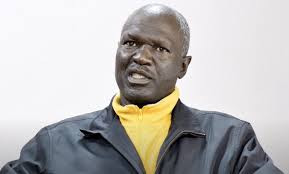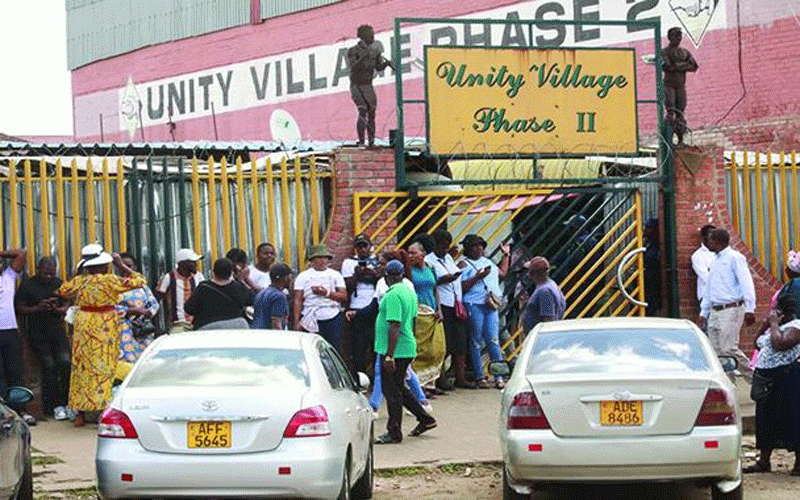MIGRATION of skilled labour from Zimbabwe to the United Kingdom (UK) has spiked since the advent of the second republic, following the November 2017 coup, further dimming the country’s prospects of economic growth.
This is a startling revelation, especially in a period when President Emmerson Mnangagwa’s regime is parading itself as the panacea to the country’s economic ills that range from spiralling hyperinflation, depreciation of the local currency against the United States dollar, low wages, absence of social safety nets and collapsed health and education systems.
These economic challenges, whether caused by maladministration, corruption or political contestations, push skilled workers to other markets where they think they will do better and manage to look after their families.
There have been wild estimates in the media that over three million Zimbabweans are in South Africa and nearly 4,5 million are outside the country.
These figures were debunked by last week’s Zimbabwe National Statistics Agency (ZimStat)’s provisional 2022 census reports on migration.
The report clearly states that nearly a million Zimbabweans are outside the country, and mainly in South Africa and the UK.
Keep Reading
- Zim headed for a political dead heat in 2023
- Record breaker Mpofu revisits difficult upbringing
- Tendo Electronics eyes Africa after TelOne deal
- Mbavara eyes to resurrect Matavire’s music legacy
According to the report, there are 773 246 Zimbabweans in South Africa.
This may shock some people, but it is corroborated by the Statistics South Africa (Stats SA) 2016 report that estimated 574 047 Zimbabweans as being in South Africa.
Stats SA further said they had 3,95 million migrants from all countries within its borders.
However, even Stats SA admits that Zimbabweans are the largest migrant group in South Africa, constituting 39% of all immigrants.
Zimbabwe is followed by Mozambique, which has 20,2% (293 405) migrants.
The statistics get a little more interesting when we look at the UK figures.
ZimStat says there are 23 000 Zimbabweans in the UK, but the UK Office of National Statistics (2021) says there are 122 000 Zimbabwe-born people living in Britain.
Zimbabwe-born is a term that encompasses people with dual nationality, some whites born in Zimbabwe, but have British ancestry.
However, the interesting bit is that we have had nearly 8 000 skilled Zimbabweans who entered the UK on skilled work visas.
The UK says there were 1 059 Zimbabweans who went into the UK in 2020, the number creeping to 1 735 in 2021 and exponentially shooting to 5 549 in 2022.
The UK officially says Zimbabwe skilled immigrants are at number five of all skilled labourers in Britain.
Ahead of Zimbabwe are India, Nigeria, Philippines and the United States in that order.
This is shocking, considering Zimbabwe’s population.
What does this mean?
The skilled visas are given to medical professionals, engineers, accountants, media personnel and technicians.
It means each passing day, Zimbabweans have a shortage of these skilled persons when they are needed the most.
We have more unfilled vacancies for doctors, specialised nurses, engineers, accountants and technicians in the public service.
We have people dying before they are attended to by a doctor. We have parastatals and other government departments going for years without being audited because there are no accountants.
We have sewer and burst water pipes everywhere because there are no engineers and technicians to attend to them.
It makes no sense that Zimbabwe should be losing so much human capital and still expects to develop into an upper-middle income economy by 2030.
This is overambitious and would not be achieved if the brain-drain is not tamed.
How can the brain drain be tamed?
This can only be done by improving a number of things, among them the provision of a good working environment.
This is a workplace where people have the basic tools to use, to work without being strained.
At the employee level, workers should have decent accommodation, transport, commensurate salaries and a reasonable pension when they retire.
These are the things that are lacking in the public sector in Zimbabwe and there seems to be no political will from government to address this.
Government expenditure on things that are needed for work is far less than the packages given to executives, who are actually islands of riches in a sea of poverty.
Government expenditure has to be realigned, more money should be put to operations than perks for senior executives.
More skilled people should be recruited and supported to the extent that leaving for foreign lands should not necessarily be attractive for them.
This is a sad indictment on Mnangagwa and his administration.
The figures churned out from ZimStat point to a man who is struggling to stop the bleeding, a man only worried about maintaining his office even at the detriment of the nation.
Other solutions lie in how the Treasury allocates resources. Salaries and wages of all workers should be reviewed, operational costs should be funded and most social services like education, health, housing and public transport should be of acceptable standards, comparable to other countries like South Africa, for instance.
In conclusion, ZimStat figures have demonstrated how much Zimbabwe has regressed post the November 2017 coup in terms of health, education, water and sanitation, labour, housing, transport and outflow of migrants.
The country is slowly becoming a shell, but this has to be stopped. Can Mnangagwa rise to the challenge? The jury is still out and the 2023 general election will point where we are.





